Abstract
The combination of a) our changing understanding of genotypic and phenotypic classification of diseases and b) the rapid growth and expansion of the number of entries in two databases targeted toward clinicians resulted in the need to develop a flexible dynamic hierarchical classification system for genetic disorders. The two databases making use of this classification schemas are the GeneClinics (GC) database - www.geneclinics.org and the GeneTests (GT) database - www.genetests.org The GC and GT databases serve respsectively as the users manual and yellow pages of genetic testing. The GeneTests/GeneClinics (GT/GC) classification hierarchy is maintained as a simple set of parent/child relationships in a relational database. The hierarchy is generated in real time in response to a user request. It is not maintained as a set of members with relationships defined by characters that are parsed to determine the structure of the tree. The GT/GC classification hierarchy entries are handled as objects by the data maintenance and search tools and may have a number of attributes and associations that create a rich tool for defining and examining genetic disorders
Full text
PDF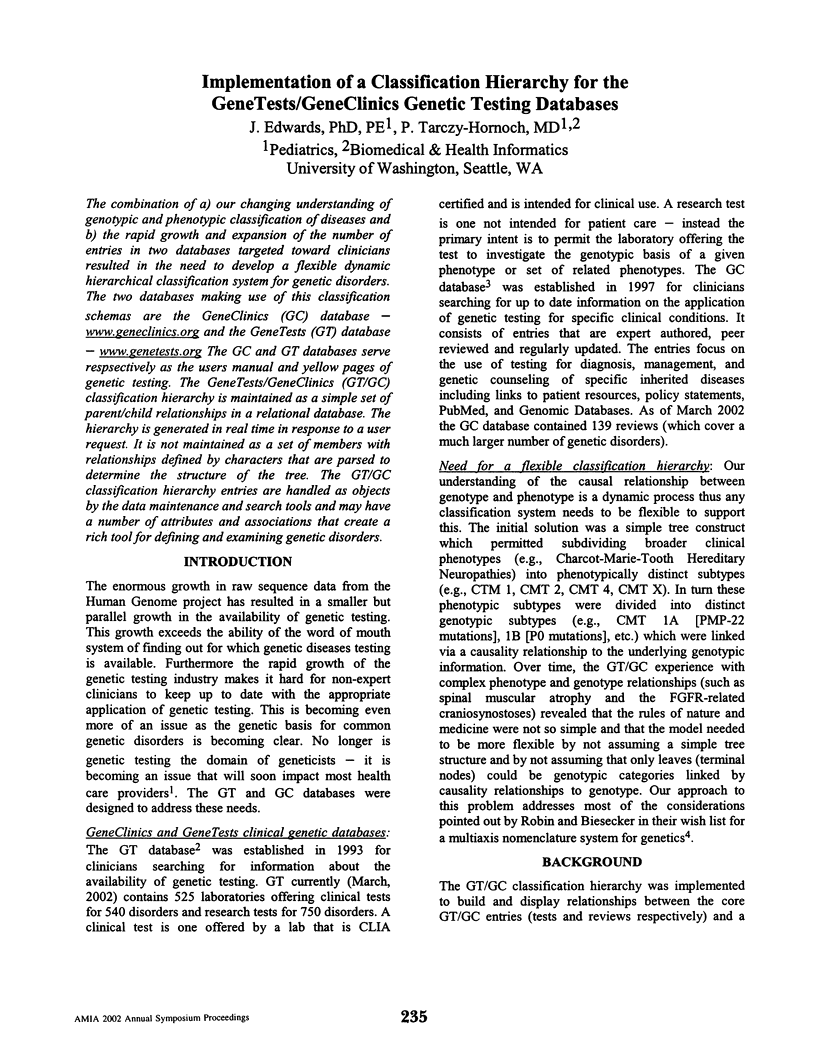
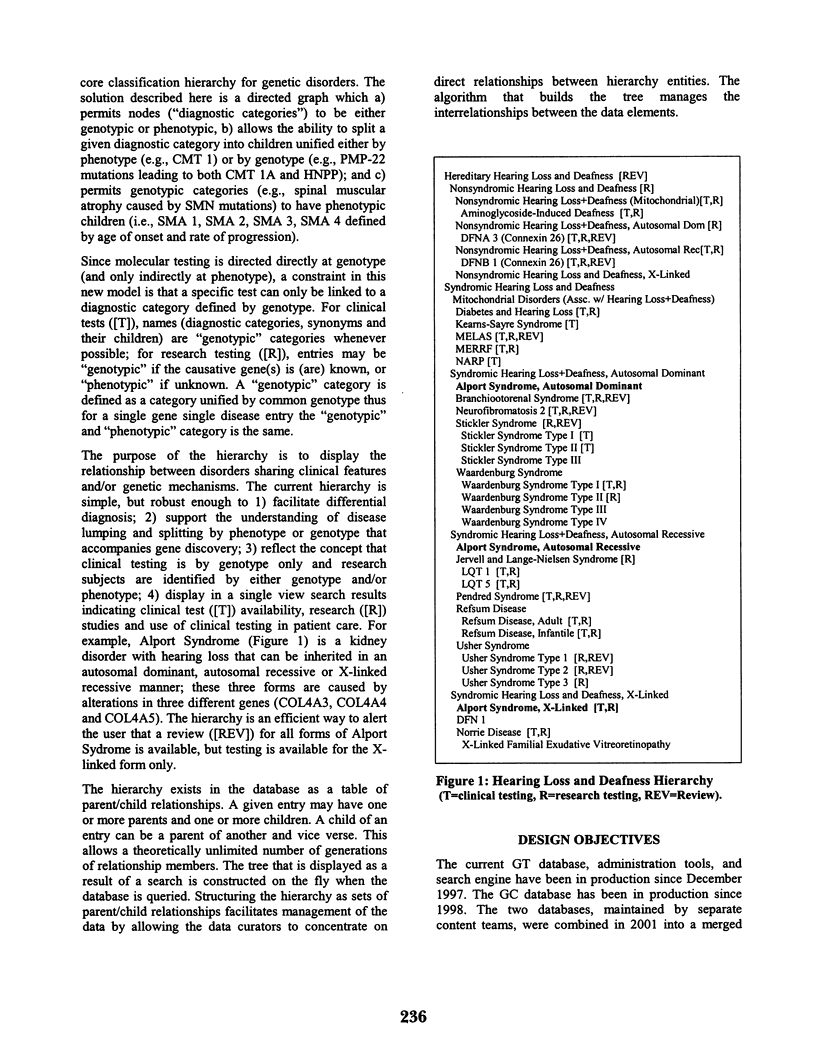
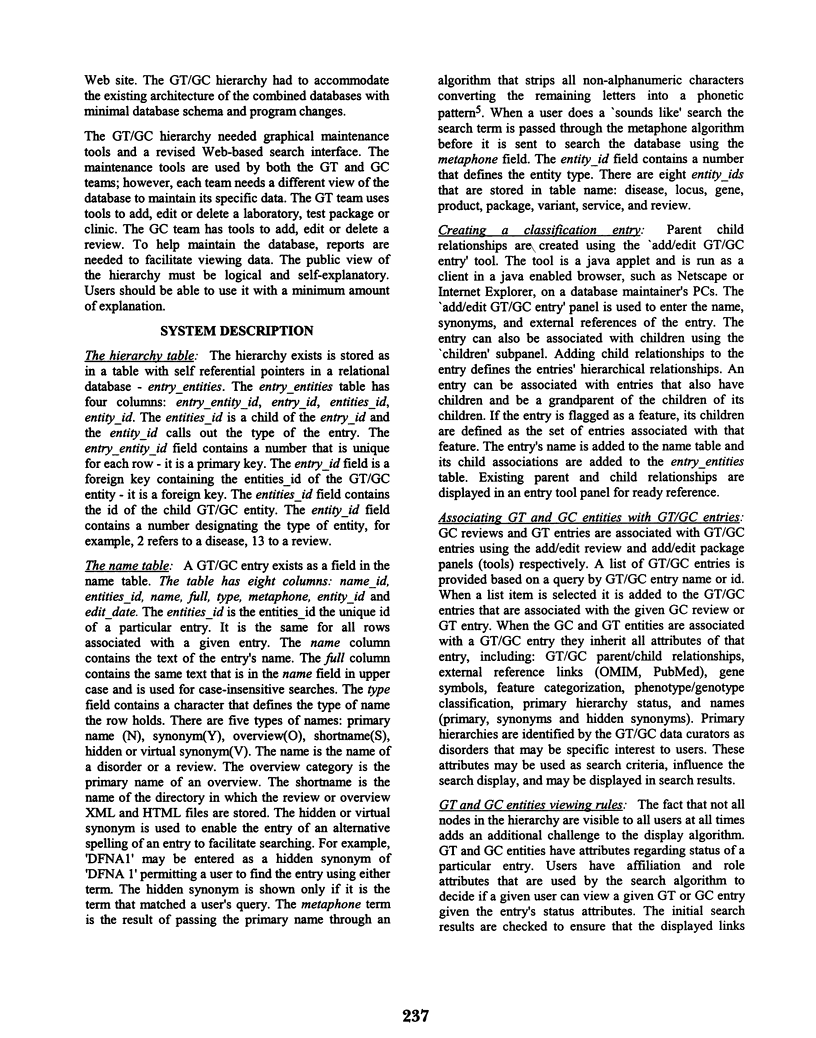
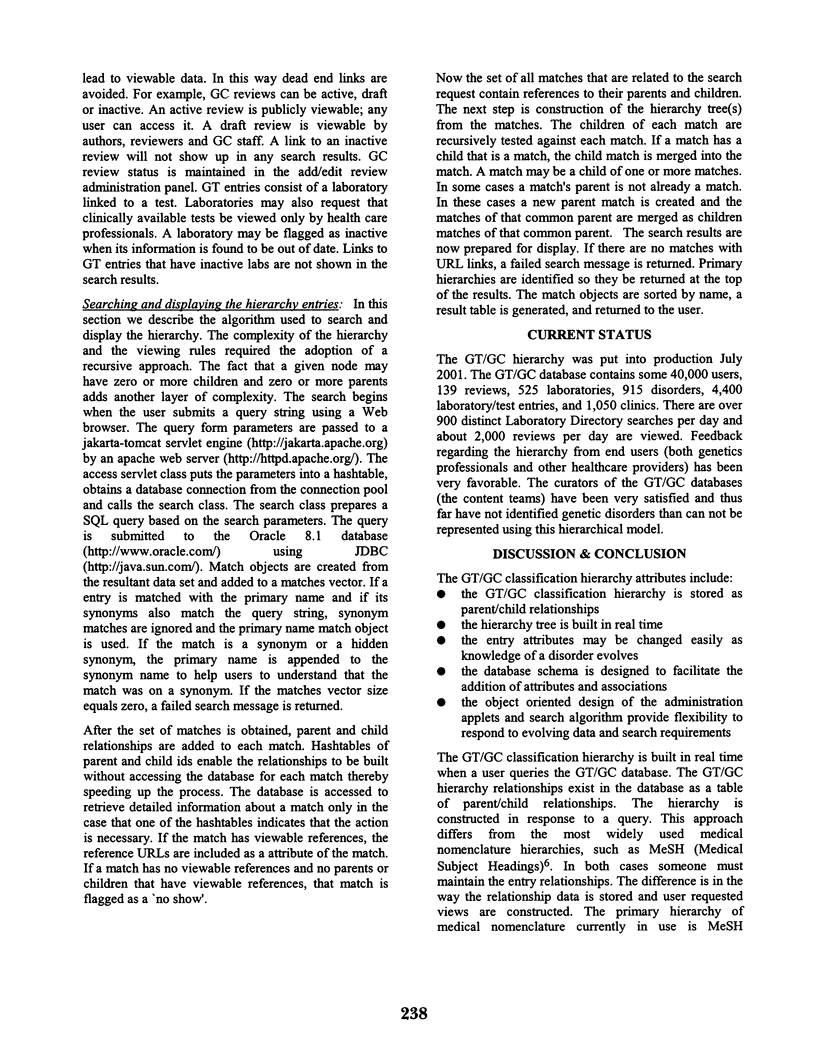
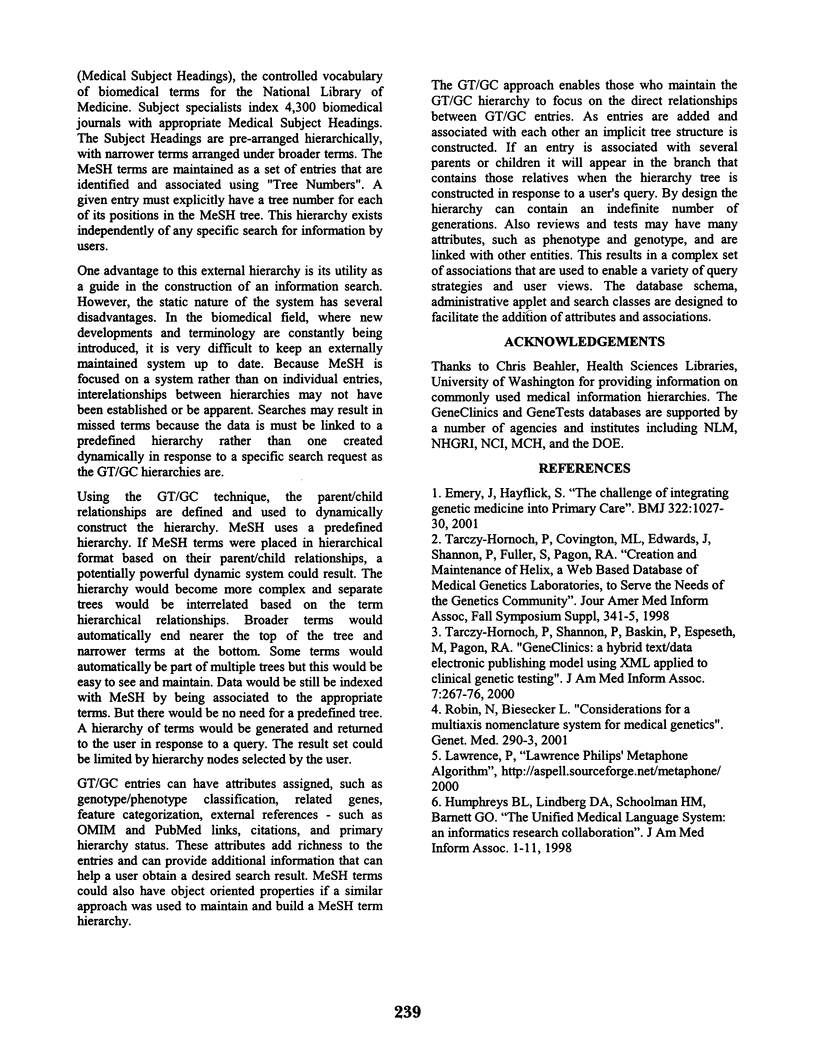
Selected References
These references are in PubMed. This may not be the complete list of references from this article.
- Emery J., Hayflick S. The challenge of integrating genetic medicine into primary care. BMJ. 2001 Apr 28;322(7293):1027–1030. doi: 10.1136/bmj.322.7293.1027. [DOI] [PMC free article] [PubMed] [Google Scholar]
- Tarczy-Hornoch P., Shannon P., Baskin P., Espeseth M., Pagon R. A. GeneClinics: a hybrid text/data electronic publishing model using XML applied to clinical genetic testing. J Am Med Inform Assoc. 2000 May-Jun;7(3):267–276. doi: 10.1136/jamia.2000.0070267. [DOI] [PMC free article] [PubMed] [Google Scholar]


